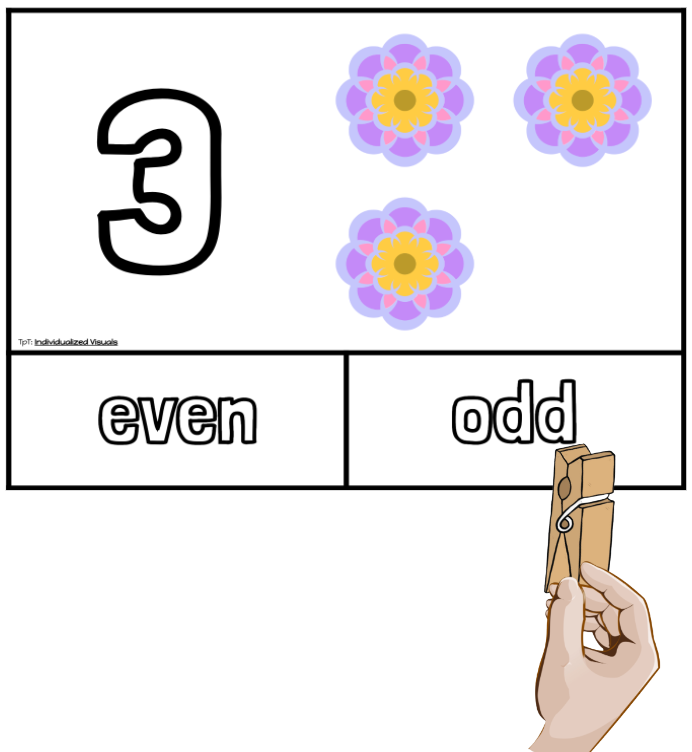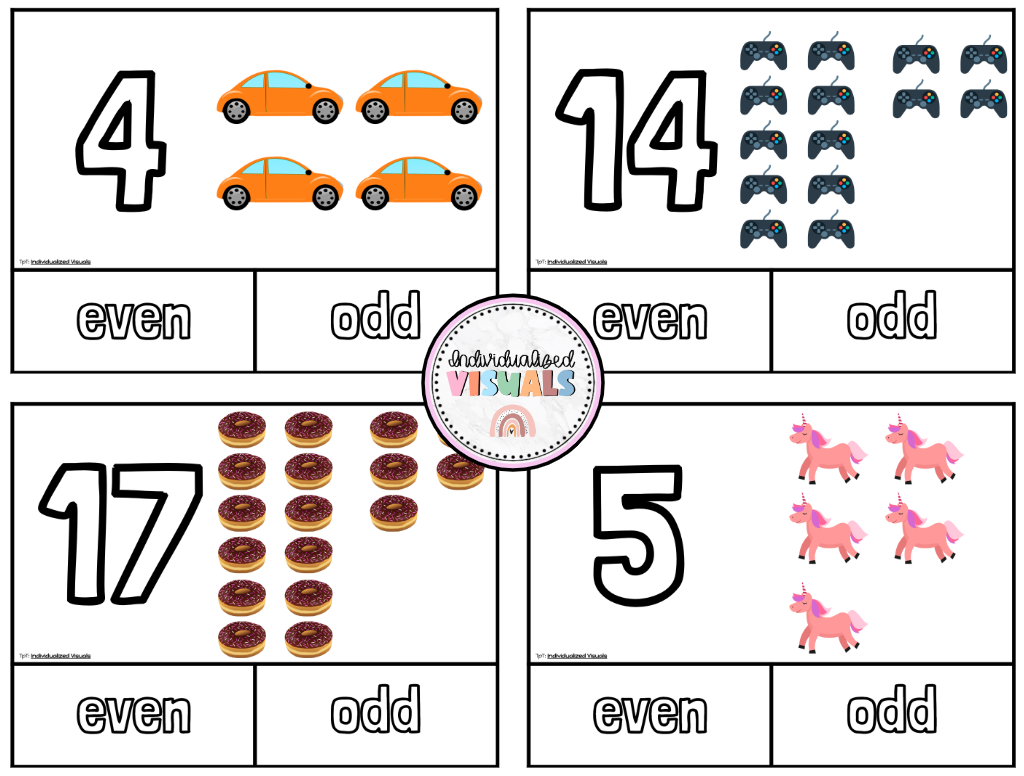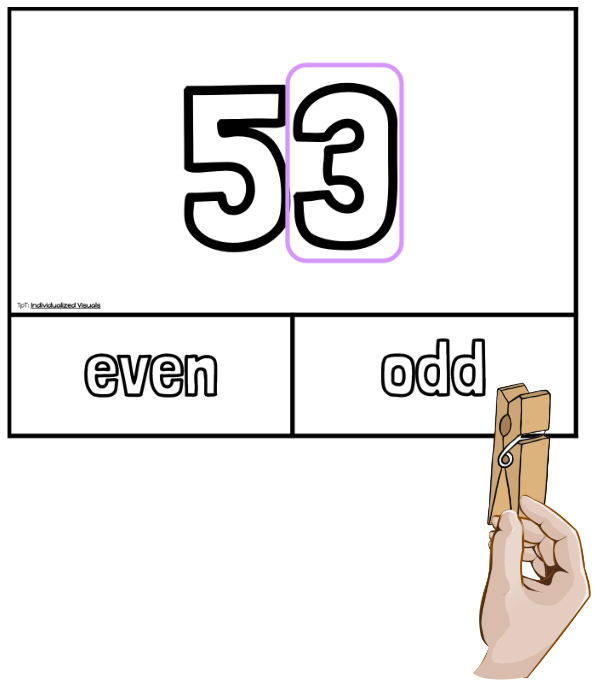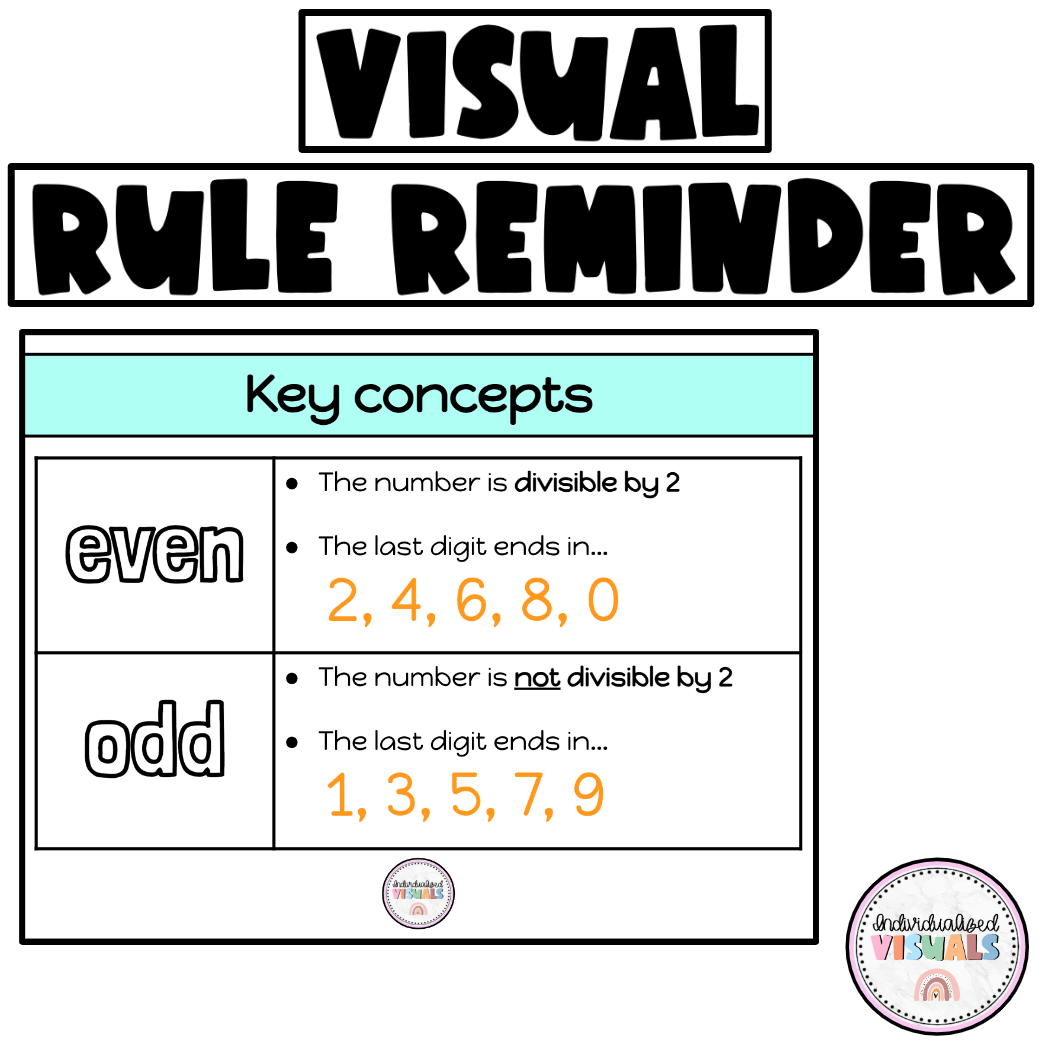Even or Odd Numbers Activities for Special Education (Copy)
Even and Odd Numbers
As educators, we understand the importance of laying a solid foundation in mathematics for our young learners. One fundamental concept that lays the groundwork for future mathematical understanding is the distinction between even and odd numbers. In this blog post, we'll explore what even and odd numbers are and provide practical strategies for teaching these concepts effectively to your Grade 2 students.
Understanding Even and Odd Numbers
Before diving into teaching strategies, let's clarify what exactly even and odd numbers are. In simple terms:
Even numbers are integers that are divisible by 2 without leaving a remainder. Examples include 2, 4, 6, 8, 10, and so on. Visually, even numbers can be represented by objects grouped into pairs, such as socks or apples.
Odd numbers, on the other hand, are integers that are not divisible by 2 without leaving a remainder. Examples include 1, 3, 5, 7, 9, and so forth. Unlike even numbers, odd numbers cannot be paired evenly.
Teaching Strategies for Teaching Even and Odd Numbers
Visual Representation
Utilize visual aids such as number lines, charts, and manipulatives to help students grasp the concept of even and odd numbers. For example, you can use colored counters or blocks to demonstrate that even numbers can be divided into equal groups, while odd numbers always have one leftover.
Hands-On Activities
Engage students in hands-on activities that encourage exploration and discovery. For instance, have students work in pairs to sort number cards into even and odd piles. Alternatively, provide opportunities for students to physically group objects into sets to determine if they are even or odd.
Pattern Recognition
Help students identify patterns related to even and odd numbers. For instance, point out that all even numbers end in 0, 2, 4, 6, or 8, while odd numbers end in 1, 3, 5, 7, or 9. Encourage students to look for patterns in the number sequence and predict whether a given number is even or odd based on these patterns.
Real-World Examples
Connect the concept of even and odd numbers to real-life scenarios to make it more relatable for students. For example, discuss how even numbers are used to represent pairs of items (like shoes or gloves), while odd numbers represent individual items. Encourage students to identify even and odd numbers in their everyday lives.
Interactive Games
Incorporate interactive games and online resources to make learning even and odd numbers fun and engaging. Educational games like "Even or Odd Bingo" or "Even and Odd Number Sort" can reinforce understanding while keeping students motivated.
Printable Even & Odd Number Activities
There are 2 ways common to teach even and odd numbers.
Even numbers have matching pairs with no remainders, and odd numbers have matching pairs with a remainder
The ones digit on even numbers is divisible by 2, and the ones digit on odd numbers is not divisible by 2
Below are 2 activities that use each teaching strategy so you can select which would be best for your class! These activities are especially catered toward special education students or students on a learning plan.
Even & Odd Numbers: 1 to 20
Task CardsUsing Matching Pairs
This activity comes with 20 task cards that focus on even and odd numbers from 1-20. Student looks at the number and puts a clothes peg on whether the number is even or odd. All of these task cards have fun visuals of common things that students enjoy which will help with engagement!
This activity also comes with a key concepts task card that serves as a visual reminder of the rules to know how to identify if a number is even or odd. These task cards focus on the rule that even numbers have pairs with no remainder, and odd numbers will have a remainder.
Even and Odd Number Task Cards Using Divisible by 2
This activity comes with 106 task cards that focus on even and odd numbers from 1-200. Student looks at the number and puts a clothes peg on whether the number is even or odd.
There are 2 progressive options!
If students are beginners at identifying if a number is even or odd using the divisible by 2 strategy, then use the task cards with a visual prompt. These task cards have a box around the ones digit, so students can check if it ends in a 2, 4, 6, 8 or 0.
Once they have mastered this, you switch them out for the task cards without the visual prompt! You’ll be surprised at how quickly they get the hang of this!
This activity also comes with a key concepts task card that serves as a visual reminder of the rules to know how to identify if a number is even or odd. I also included task cards with visual prompts (a circle on the ones digit) and task cards without a visual prompt. This allows you to swap out the cards once you see that your students are getting proficient with the activity!






